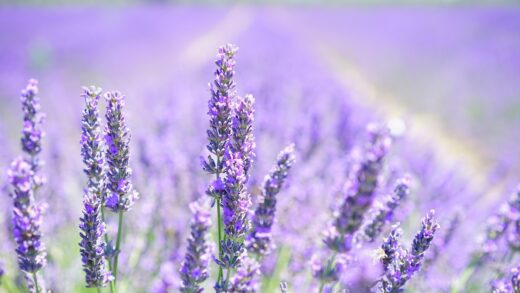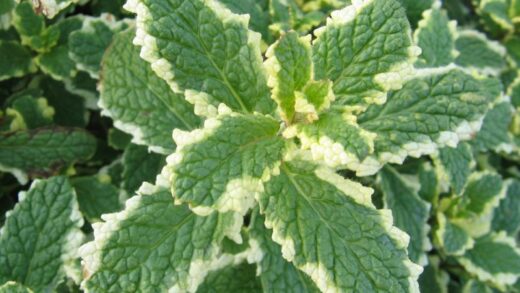The topic of pruning Hosta ventricosa is one of simplicity and necessity rather than complex horticultural technique. Unlike woody shrubs or fruit trees that require intricate pruning to shape them or encourage production, the pruning needs of this herbaceous perennial are minimal and focused primarily on sanitation and aesthetics. The main tasks involve removing spent flower scapes after blooming and cutting back the dead foliage at the end of the growing season. While these actions may seem minor, they play a significant role in the overall health, appearance, and long-term vigor of the plant. Properly timed pruning helps to direct the plant’s energy, maintain a tidy look, and, most importantly, prevent the overwintering of pests and diseases, setting the stage for a healthy return in the spring.
The life cycle of the hosta dictates the two primary moments for pruning. The first occurs in mid to late summer, after the plant has concluded its impressive floral display. The tall stalks, or scapes, that bore the beautiful violet flowers will begin to fade and turn yellow or brown. At this point, they no longer serve an ornamental purpose and can be removed. This not only tidies up the plant’s appearance but also prevents the plant from expending unnecessary energy on developing seed pods, redirecting that energy instead towards root and leaf growth for the remainder of the season.
The second, and more critical, pruning event takes place in the late autumn after the first hard frosts have killed the foliage. The lush, green leaves will turn yellow, then brown and mushy, as the plant enters its winter dormancy. Cutting back this dead foliage is a crucial act of garden hygiene. It removes the ideal hiding place for slugs and their eggs and eliminates the plant debris where fungal diseases can overwinter. This simple act of sanitation can dramatically reduce pest and disease problems in the following growing season.
It is important to understand that pruning Hosta ventricosa during its active growing season is generally unnecessary and not recommended. The plant’s natural, mounding form is one of its key ornamental features, and there is no need to shape it. Removing healthy, green leaves during the spring or summer would only reduce the plant’s ability to photosynthesize, which could weaken it and diminish its energy reserves. Therefore, the focus of pruning remains squarely on the removal of parts of the plant that have completed their life cycle—the flower scapes and the senescent autumn leaves.
Pruning flower scapes
After Hosta ventricosa has completed its flowering in mid-summer, the tall stalks, known as scapes, will begin to look less attractive. The individual flowers will wilt and fall, and the scape itself will start to turn yellow and then brown. At this stage, it is beneficial to remove them for both aesthetic and horticultural reasons. A pair of clean, sharp pruning shears or scissors is the ideal tool for this task. The cut should be made as close to the base of the scape as possible, down where it emerges from the main clump of leaves, without damaging the surrounding foliage.
More articles on this topic
Removing the spent flower scapes, a practice known as deadheading, serves a practical purpose beyond simply tidying the plant’s appearance. If left on the plant, the faded flowers will develop into seed pods. The production of seeds requires a significant amount of energy from the plant. By cutting off the scapes before the seeds mature, you prevent this energy expenditure. This allows the plant to redirect its resources towards more beneficial activities for a foliage plant, such as developing a stronger root system and storing energy for the winter, which will result in a more vigorous and robust plant the following year.
Some gardeners may choose to leave the flower scapes on the plant if they wish to collect seed. Hosta ventricosa is one of the few hosta species that produces viable seed fairly readily. If seed collection is the goal, the scapes should be left until the pods have turned brown and dry but before they split open. However, for most gardeners who are growing the plant for its ornamental foliage, removing the scapes is the recommended practice to maintain the plant’s vigor and clean appearance.
The timing of this task is not absolutely critical, but it is best done as soon as the flowering display has finished and the scapes begin to look untidy. There is no harm in leaving them for a few weeks, but the sooner they are removed, the sooner the plant can stop investing energy in them. This simple act of grooming takes only a few moments but makes a noticeable difference in the overall neatness of the garden and contributes positively to the long-term health of the plant.
Removing damaged leaves
Throughout the growing season, individual leaves on a Hosta ventricosa may become damaged for various reasons. This damage can be caused by hail, strong winds, accidental injury from garden tools, or significant pest damage from slugs and snails. When a leaf is torn, yellowed, or heavily chewed, it can detract from the overall beauty of the plant. In these cases, it is perfectly acceptable to remove the damaged leaves to maintain the plant’s aesthetic appeal.
More articles on this topic
When removing a single damaged leaf, it is important to cut the entire leaf stalk, or petiole, back to the base of the plant. Using sharp, clean pruning shears, follow the stalk down into the crown and make a clean cut as low as possible. Simply cutting off the damaged part of the leaf blade while leaving the stalk in place is not recommended, as the remaining stalk will simply die back and can look unsightly. Removing the entire leaf encourages the plant to produce new growth from the crown.
It is crucial to use discretion when removing damaged leaves. While taking off a few unsightly leaves will not harm a large, healthy plant, it is important not to remove too much of the foliage at once. The leaves are the plant’s engine for photosynthesis, and removing a significant portion of them during the active growing season can reduce the plant’s ability to create energy, potentially weakening it. As a general rule, only remove leaves that are severely damaged and are a major visual distraction.
Practicing good sanitation during this process is also important. If you are removing leaves that show signs of a potential fungal disease, such as large spots with dark borders, it is wise to disinfect your pruning tool between cuts and between plants. This can be done easily by wiping the blades with a cloth soaked in rubbing alcohol or a 10% bleach solution. This simple step helps to prevent the accidental spread of pathogens from one part of the garden to another.
The autumn cut-back
The most significant pruning task for Hosta ventricosa occurs in the late autumn. This is the annual cut-back of all the foliage in preparation for winter dormancy. This process should only be undertaken after the plant’s leaves have naturally begun to die back, turning yellow and then brown following several hard frosts. This is a sign that the plant has finished photosynthesizing for the year and has successfully transferred its energy reserves from the leaves down into the underground rhizomes for winter storage.
Cutting the foliage back too early in the autumn, while it is still green and actively growing, can be detrimental to the plant. Doing so would interrupt the vital process of senescence and energy transfer, effectively starving the plant of the resources it needs to survive the winter and to produce a robust flush of growth the following spring. Patience is key; it is best to wait until the foliage is fully collapsed and discolored before proceeding with the cut-back.
Using pruning shears, a sickle, or even a pair of garden scissors, cut all the dead leaves and their stalks back to about one to two inches from the ground. This comprehensive cleanup is arguably the most important sanitation practice in hosta care. The thick mat of decaying leaves provides the perfect, moist, sheltered environment for slugs, snails, and their countless eggs to overwinter. By removing this debris, you eliminate a huge portion of the next year’s pest population before it even has a chance to start.
In addition to pest control, the autumn cut-back is also critical for disease management. Fungal spores and other pathogens can easily overwinter on the dead plant material left in the garden. Removing and disposing of the old foliage breaks this cycle and ensures that the new shoots emerge into a clean environment in the spring, reducing the likelihood of early-season infections. The removed foliage should be bagged and thrown away or burned, rather than being added to the compost pile, to ensure any potential pathogens are eliminated.
When not to prune
Understanding when not to prune Hosta ventricosa is just as important as knowing when to do it. The cardinal rule is to avoid any significant pruning or removal of healthy, green foliage during the plant’s active growing season in the spring and summer. The leaves are the plant’s solar panels, and each one contributes to the overall energy production that fuels growth, flowering, and root development. Unnecessary removal of this foliage will weaken the plant.
There is no need to prune the plant for shaping purposes. Hosta ventricosa has a naturally graceful and symmetrical mounding habit that should be allowed to develop without interference. Unlike shrubs that can become overgrown or messy, a hosta’s form is genetically determined, and attempting to “shape” it by trimming the leaves would only damage its appearance and health. The beauty of the plant lies in its full, lush clump of arching leaves.
Similarly, one should resist the urge to tidy up the plant too early in the autumn. The process of leaf senescence, where the leaves turn yellow, is a crucial biological function. During this time, the plant is salvaging valuable nutrients, such as nitrogen and phosphorus, from the dying leaves and moving them down into the rhizomes for storage. Cutting the leaves off while they are still yellow short-circuits this process. It is essential to wait until after a few hard frosts have turned the leaves brown and mushy, signaling that the energy transfer is complete.
Finally, avoid any pruning or cutting in the very early spring as the new shoots, or pips, are emerging. These tender, pointed shoots are the beginnings of the new season’s leaves, and they are quite fragile. It is a time for protection, not pruning. The only task at this point should be the gentle removal of any remaining winter mulch to allow the pips to emerge unimpeded into the warming spring sunlight. Any necessary division of the plant should be done carefully around these emerging shoots.


















